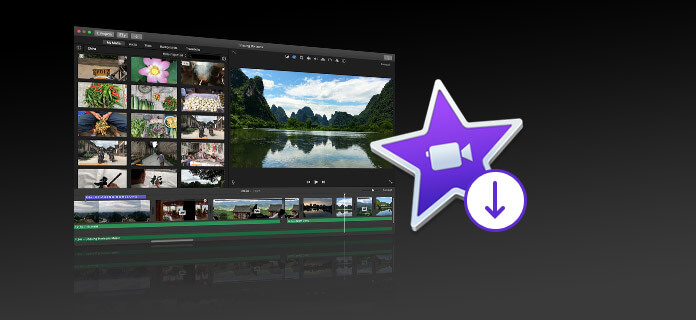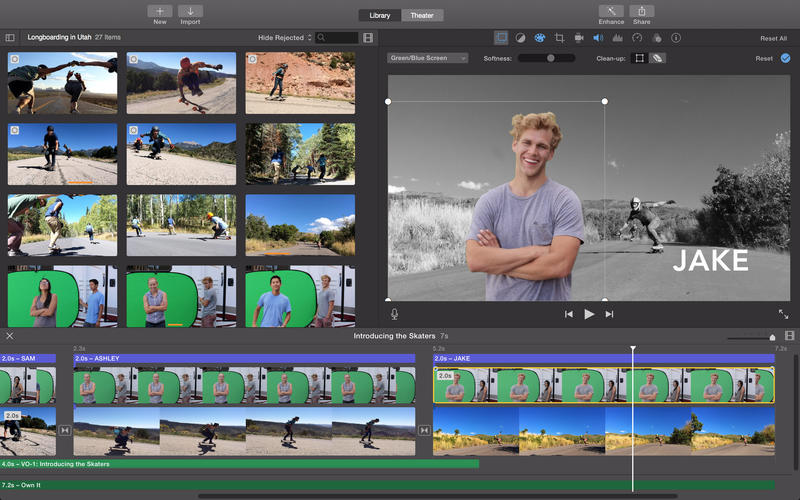Let’s face it: iMovie’s audio library kinda sucks. In this short tutorial, you’ll learn how to add your own music to iMovie — on both Mac and iPhone — and make better videos as a result.
With iMovie, Apple offers a world of opportunity to anyone interested in making videos.
The software allows you to cut clips, add transitions, overlay titles, and much more — all for free. But if you’ve ever used it, you likely know that iMovie’s seven-song music library is… shall we say, underwhelming?
Free Download iMovie for Mac or The Better Alternative. IMovie is the most important video editor for Mac. With it, you can easily edit your photos and video files and add animated titles, beautiful themes, music, and effects. Sep 01, 2017 No thanks Try it free. Find out why Close. HOW TO GET OLD IMOVIE ON MAC OS MOJAVE 2019 ThatChase. Get iMovie 9 On Mac OS Sierra! (Works As Of 2019!) - Duration: 11:51.
The good news is you’re not stuck with that tiny, trite collection. Adding other music to your videos in iMovie is a breeze. Let’s walk through the short steps for both Mac and iOS devices now.
1. Download music for iMovie
In a perfect world, you’d be able to add any song you want to your video. But in reality, it’s usually not that straightforward.
To adhere to copyright laws, all major video platforms — including YouTube, Facebook, Instagram, and Vimeo — enforce certain music policies. Here’s YouTube’s, for example.
If you violate these policies, your video may be removed or monetized through ads (to pay the copyright holders). And here’s the kicker: This applies for both commercial and personal use.
Download Imovie On Mac
So, even if you’re just sharing a photo slideshow of your nephew’s bar mitzvah (mazel tov!) on Facebook, your video may be removed if it contains protected music.
The simplest solution? License copyright-cleared music.
Copyright-cleared music isn’t copyright-free (a common misconception). It just means it’s been approved for use on various platforms. As a result, videos with copyright-cleared music don’t get flagged, taken down, or penalized in any other way.
All of the music I offer on this website is copyright-cleared. So you can safely license any of my songs or — if you want to dramatically increase your musical options —become a Music for Makers Unlimited customer. When you do, you’ll get instant access to hundreds of exclusive tracks that you can then import into iMovie.
But I digress.
Regardless of where you decide to source your music, go ahead and download your song of choice on your computer and open it in iTunes. (If you’re going to be working on iOS and don’t want to use iTunes for some reason, you can alternatively upload the file to your iCloud Drive.)
2. Import music to iMovie
Get your music handy. It’s time to bring it into iMovie and make some magic.
Working on a Mac?
Open your iMovie project and click the “Audio” tab in the top left. (Make sure “iTunes” is selected in the left panel.) You should then see your entire iTunes library. Search for the song you’d like to use — the one you just added to iTunes in the previous step.
Pro tip: On a Mac, you can also simply drag and drop audio files into iMovie’s media folder (or import by clicking the down arrow button in the top left side of the window) and skip the whole iTunes bit entirely.
Working on an iPhone or another iOS device?
Open your iMovie project, tap the “+” button, and select “Audio.” On the following menu, tap “Songs,” and then find the song you’d like to use. (Can’t locate it? Make sure you’ve synced your iTunes library since adding the song on your computer.)
If you uploaded the song to your iCloud Drive rather than iTunes, select “iCloud Drive” instead of “Audio,” and navigate to the song file.
3. Add music and edit as necessary
Once you’ve found your song, drag it to the very bottom of the editing timeline component. (On iOS, just tap the song to have it automatically added.) This will anchor the track, ensuring it doesn’t get affected by any cuts or edits you make to other audio and video files.
Now, the odds are good that your background music won’t be the perfect length for your video. If it’s too long, grab the right side of the track and drag left. Then, click the fade handle (i.e., the small circle on the right edge of the track — I believe this is available on the Mac version of iMovie only) and drag it left to create a fade out.
If the track is too short, you’ll probably need to loop it. For tips on that, check out my beginner’s guide to audio editing.
Find your groove
Ready to add awesome background music to your videos with iMovie? License a track from my boutique library of royalty-free, copyright-cleared music.
Use 4k and 60 fps video
Learn how to work with 4k and 60 frames per second (fps) video in iMovie.

How To Use Imovie
Learn how to work with 4k and 60 fps video
Add photos and videos
Add photos and videos to your iMovie project on an iPhone, iPad, or Mac.
Learn how to add photos and videosWatch your iMovie videos
How To Download Imovie For Free On Macbook Pro

To watch your movies and trailers on your Apple TV, use AirPlay. To watch your videos on all your devices, transfer your videos to iCloud Photos.
Learn more about how to watch your videosMove your library
To save space on your Mac, you can move your iMovie library to an external hard drive.
How To Get Imovie For Free On Mac 2015
Learn how to move your iMovie libraryExplore iMovie basics with Today at Apple
In this hands-on session, learn how to use iMovie to shorten and arrange your clips, and to add audio, titles, and other effects.
Find a session near youDownload Imovie For Free
User Guides
Have a question? Ask everyone.
The members of our Apple Support Community can help answer your question. Or, if someone’s already asked, you can search for the best answer.
Ask about iMovie for MacHow To Get Free Music For Imovie On Mac
Ask about iMovie for iOSTell us how we can help
Answer a few questions and we'll help you find a solution.
Get support